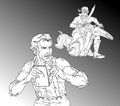Template:Selected anniversaries/July 23: Difference between revisions
No edit summary |
No edit summary |
||
| Line 1: | Line 1: | ||
<gallery> | <gallery> | ||
||1584 | ||1584: John Day dies ... printer. | ||
File:Joseph-Louis Lagrange.jpg|link=Joseph-Louis Lagrange (nonfiction)|1754: [[Joseph-Louis Lagrange (nonfiction)|Joseph-Louis Lagrange]] publishes his first work, in the form of a letter in Italian. A month later he realized that he had rediscovered Leibniz's formula for the nth derivative of a product. | File:Joseph-Louis Lagrange.jpg|link=Joseph-Louis Lagrange (nonfiction)|1754: [[Joseph-Louis Lagrange (nonfiction)|Joseph-Louis Lagrange]] publishes his first work, in the form of a letter in Italian. A month later he realized that he had rediscovered Leibniz's formula for the nth derivative of a product. | ||
||1773 | ||1773: George Edwards dies ... biologist and ornithologist. | ||
||1796 | ||1796: Franz Berwald born ... surgeon and composer. | ||
||1775 | ||1775: Étienne-Louis Malus born ... physicist and mathematician. | ||
File:Typographer patent 1829.jpg|link=Typographer (typewriter) (nonfiction)|1829: William Austin Burt patents the [[Typographer (typewriter) (nonfiction)|typographer]], a precursor to the typewriter. | File:Typographer patent 1829.jpg|link=Typographer (typewriter) (nonfiction)|1829: William Austin Burt patents the [[Typographer (typewriter) (nonfiction)|typographer]], a precursor to the typewriter. | ||
||Włodzimierz Stożek | ||1883: Włodzimierz Stożek bonr ... mathematician. He published numerous papers on the theory of integral equations, potential theory, as well as on many other branches of mathematics. Pic. | ||
File:Mark Twain Interviews Wallace War-Heels.jpg|link=Mark Twain Interviews Wallace War-Heels|1885: The well-known illustration ''[[Mark Twain Interviews Wallace War-Heels|Interview with Wallace War-Heels]]'' is stolen by [[math criminals]], who demand computational ransom. | File:Mark Twain Interviews Wallace War-Heels.jpg|link=Mark Twain Interviews Wallace War-Heels|1885: The well-known illustration ''[[Mark Twain Interviews Wallace War-Heels|Interview with Wallace War-Heels]]'' is stolen by [[math criminals]], who demand computational ransom. | ||
||1886 | ||1886: Walter H. Schottky born ... physicist and engineer. | ||
|| | ||1903: Theodore Christian Schneirla born ... comparative psychologist whose empirical work was based on observations on the behavior patterns of army ants. His "biphasic A-W theory" reduced all behavior to two simple responses: approach and withdrawal -- we approach what causes pleasure, and we withdraw from what causes unpleasure or pain. | ||
|| | ||1906: Vladimir Prelog, Croatian-Swiss chemist and academic, Nobel Prize laureate (d. 1998) | ||
|| | ||1907: Charles Bradfield Morrey Jr. born ... mathematician who made fundamental contributions to the calculus of variations and the theory of partial differential equations. | ||
|| | ||1912: Jean Louis Maxime van Heijenoort born ... pioneer historian of mathematical logic. He was also a personal secretary to Leon Trotsky from 1932 to 1939, and from then until 1947, an American Trotskyist activist. Pic. | ||
||Ingram Olkin | ||1916: William Ramsay dies ... chemist and academic, Nobel Prize laureate. | ||
||1924: Ingram Olkin born ... statistician and academic ... is known for developing statistical analysis for evaluating policies, particularly in education, and for his contributions to meta-analysis, statistics education, multivariate analysis, and majorization theory. Pic. | |||
File:Hans Hahn.jpg|link=Hans Hahn (nonfiction)|1934: Mathematician and crime-fighter [[Hans Hahn (nonfiction)|Hans Hahn]] publishes new analysis of set theory which soons finds application in detecting and preventing [[crimes against mathematical constants]]. | File:Hans Hahn.jpg|link=Hans Hahn (nonfiction)|1934: Mathematician and crime-fighter [[Hans Hahn (nonfiction)|Hans Hahn]] publishes new analysis of set theory which soons finds application in detecting and preventing [[crimes against mathematical constants]]. | ||
| Line 33: | Line 35: | ||
File:Vera Rubin.jpg|link=Vera Rubin (nonfiction)|1928: Astronomer and academic [[Vera Rubin (nonfiction)|Vera Rubin]] born. She will discover the discrepancy between the predicted angular motion of galaxies and the observed motion, by studying galactic rotation curves. | File:Vera Rubin.jpg|link=Vera Rubin (nonfiction)|1928: Astronomer and academic [[Vera Rubin (nonfiction)|Vera Rubin]] born. She will discover the discrepancy between the predicted angular motion of galaxies and the observed motion, by studying galactic rotation curves. | ||
||1929 | ||1929: The Fascist government in Italy bans the use of foreign words. | ||
||1930 | ||1930: Glenn Curtiss dies ... pilot and engineer. | ||
||Valdemar Poulsen | ||1942: Valdemar Poulsen dies ... engineer who made significant contributions to early radio technology. He developed a magnetic wire recorder called the telegraphone in 1899 and the first continuous wave radio transmitter, the Poulsen arc transmitter, in 1903, which was used in some of the first broadcasting stations until the early 1920s. | ||
File:Alice Beta.jpg|link=Alice Beta|1962: Mathematician and crime-fighter [[Alice Beta]] uses [[Telstar (nonfiction)|Telstar]] to communicate with [[AESOP]]. | File:Alice Beta.jpg|link=Alice Beta|1962: Mathematician and crime-fighter [[Alice Beta]] uses [[Telstar (nonfiction)|Telstar]] to communicate with [[AESOP]]. | ||
| Line 43: | Line 45: | ||
File:Telstar.jpg|link=Telstar (nonfiction)|1962: [[Telstar (nonfiction)|Telstar]] relays the first publicly transmitted, live trans-Atlantic television program, featuring Walter Cronkite. | File:Telstar.jpg|link=Telstar (nonfiction)|1962: [[Telstar (nonfiction)|Telstar]] relays the first publicly transmitted, live trans-Atlantic television program, featuring Walter Cronkite. | ||
||Werner Wolfgang Rogosinski | ||1964: Werner Wolfgang Rogosinski dies ... mathematician. His interest was analytical problems, especially in series. His dissertation, "New Application of Pfeiffer's method for Dirichlet's divisor problem", caused a stir in 1922. Pic. | ||
||Samarendra Nath Roy | ||1964: Samarendra Nath Roy dies ... mathematician and an applied statistician. Pic. | ||
||1968 | ||1968: Henry Hallett Dale dies ... pharmacologist and physiologist, Nobel Prize laureate. | ||
||1972 | ||1972: The United States launches Landsat 1, the first Earth-resources satellite. | ||
||Jesse Wakefield Beams | ||1977: Jesse Wakefield Beams dies ... physicist. Manhattan project, gravestone. | ||
||Lazar Aronovich Lyusternik | ||1981: Lazar Aronovich Lyusternik dies ... mathematician. He is famous for his work in topology and differential geometry, to which he applied the variational principle. | ||
||1990 | ||1990: Kenjiro Takayanagi, Japanese engineer (b. 1899) Father of Japanese television. Kenjiro Takayanagi (d. July 23, 1990 in Yokosuka) was a Japanese engineer and a pioneer in the development of television. Although he failed to gain much recognition in the West, he built the world's first all-electronic television receiver, and is referred to as "the father of Japanese television". | ||
||1995 | ||1995: Comet Hale–Bopp is discovered; it becomes visible to the naked eye on Earth nearly a year later. | ||
||2012 | ||2012: Sally Ride, American physicist and astronaut. | ||
||2015 | ||2015: NASA announces discovery of Kepler-452b by Kepler. | ||
||Florence Steinberg | ||2017: Florence Steinberg dies ... publisher of one of the first independent comic books, the underground/alternative comics hybrid Big Apple Comix, in 1975. Additionally, as the secretary for Marvel Comics editor Stan Lee and the fledgling company's receptionist and fan liaison during the 1960s Silver Age of Comic Books, she was a key participant of and witness to Marvel's expansion from a two-person staff to a pop culture conglomerate. | ||
File:AESOP.jpg|link=AESOP|2017: [[AESOP]] re-broadcasts Walter Cronkite's 1962 trans-Atlantic television program. | File:AESOP.jpg|link=AESOP|2017: [[AESOP]] re-broadcasts Walter Cronkite's 1962 trans-Atlantic television program. | ||
</gallery> | </gallery> | ||
Revision as of 19:22, 15 August 2018
1754: Joseph-Louis Lagrange publishes his first work, in the form of a letter in Italian. A month later he realized that he had rediscovered Leibniz's formula for the nth derivative of a product.
1829: William Austin Burt patents the typographer, a precursor to the typewriter.
1885: The well-known illustration Interview with Wallace War-Heels is stolen by math criminals, who demand computational ransom.
1934: Mathematician and crime-fighter Hans Hahn publishes new analysis of set theory which soons finds application in detecting and preventing crimes against mathematical constants.
1928: Astronomer and academic Vera Rubin born. She will discover the discrepancy between the predicted angular motion of galaxies and the observed motion, by studying galactic rotation curves.
1962: Mathematician and crime-fighter Alice Beta uses Telstar to communicate with AESOP.
1962: Telstar relays the first publicly transmitted, live trans-Atlantic television program, featuring Walter Cronkite.
2017: AESOP re-broadcasts Walter Cronkite's 1962 trans-Atlantic television program.







